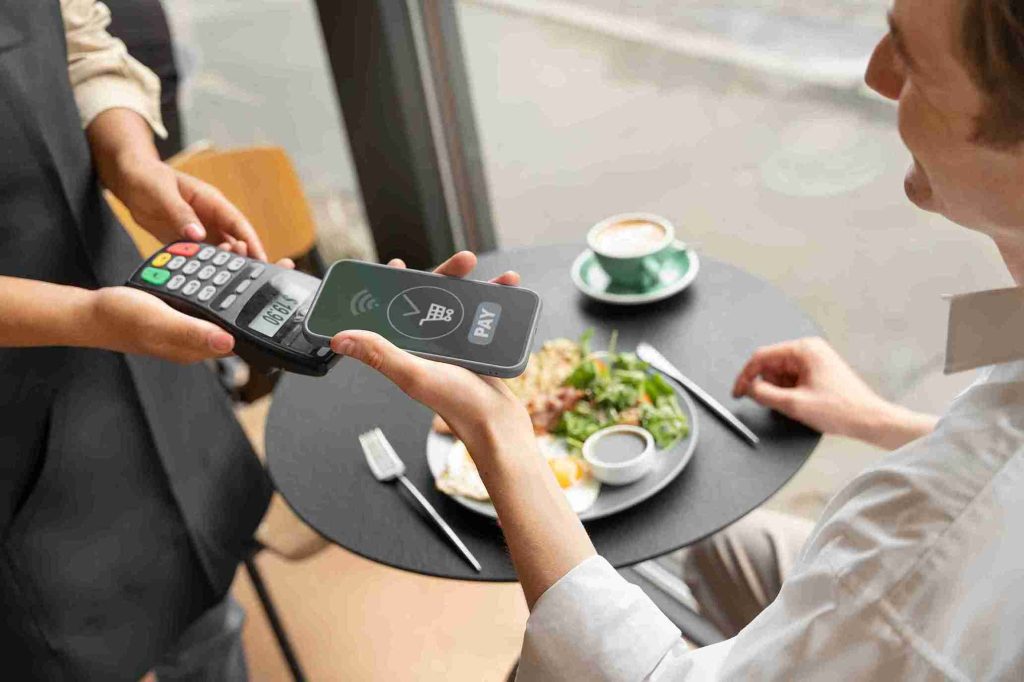A POS system is crucial for the success of businesses like restaurants and retail stores. It can greatly impact growth and cost savings. But first, let’s define what a point-of-sale system is. The point of sale, or POS, is an intricate software and hardware combination used to process transactions. It typically includes features like inventory management, analytic sales and stock reporting, discount and loyalty modules, and integrated payment processing. A well-chosen POS software solution can streamline operations and enhance customer experience saving you money and time. It acts as a hub for managing sales, inventory, and customer data empowering businesses to make informed decisions with confidence driving profitability.
Seamless Order Management: Enhancing Efficiency and Customer Satisfaction

Seamless order management is the backbone of any successful restaurant workflow, significantly enhancing operational efficiency and elevating customer satisfaction. Order management involves the smooth flow of orders from the point of placement to their timely preparation and serving of dishes, ensuring efficiency and accuracy, especially during busy hours.
An integrated POS system can streamline operations within the restaurant with its modern integrations such as
-Kitchen display systems
-Integrated KOT
-Multi-kitchen management
-QR-based ordering,
-KIOSK-based ordering,
-Table-side ordering.

Kitchen display system,
Integrated order display systems often help in order tracking and status updates, allowing both kitchen staff and waiter to monitor the progress of their orders. This improves transparency within the restaurant, fostering efficiency. It enhances the communication between kitchen staff and waiters. Restaurant staff can efficiently monitor, receive, process, and fulfill orders, reducing errors and minimizing wait times.
Integrated KOT and kitchen printers
It enables KOT printing for each order helping chefs and kitchen staff to promptly accept and prepare orders. This timely communication facilitates prompt order preparation and accurate fulfillment, further improving customer satisfaction and reducing mistakes and unnecessary delays.
In essence, seamless order management is an essential component of any restaurant POS software, providing smoother workflows and a greater dining experience.
Multi-Kitchen Management
Multi-kitchen management in POS software allows different types of items in a single order to be fired to the particular kitchen that prepares that specific item, enhancing accuracy and reducing errors.
Imagine a busy restaurant with 10 kitchens, each specializing in different types of cuisine. With multi-kitchen management in POS software, when a guest places an order containing a burger, steak, juice, and salad each item is automatically sent to the kitchen best assigned to prepare it. So every chef can start preparing it accordingly. This streamlined process ensures that each dish is prepared quickly and accurately, minimizing wait times and maximizing customer satisfaction. it avoids unnecessary interruption of kitchen staff asking if a specific item is ready, and front office staff can track the status of any dish ordered via POS by their status such as waiting, accepted, preparing, ready, etc.
Self Ordering Solutions
Nowadays, self-ordering solutions redefine dining experiences, providing unparalleled convenience to customers and staff. With QR ordering, guests simply scan a QR code to access the menu on their phones, choose the items, customize their selections, and place orders easily. Tableside ordering is mostly done through a waiter application that lists the menu with displayed item images, customers to browse offerings, request assistance, and even pay without approaching the cashier, improving convenience and reducing the checkout rush. Meanwhile, self-ordering kiosk stations enable diners to browse digital menus, customize meals, add modifiers, and complete payments seamlessly.
The Impact of Online Ordering and Online Store Features in Restaurant POS
The integration of online ordering and online store features within restaurant point-of-sale (POS) systems has become a game-changer. This empowers diners and restaurants by offering convenience, and accessibility.
With integrated online stores, restaurants can set up their store to announce their specials and offers and list their favorite dishes with attractive pictures to attract online customers, Customers can browse menus, customize items, place orders, and schedule pickups or deliveries from the comfort of their homes and even make payments. This can cater to the growing demand for off-premises dining experiences.
With this restaurants can showcase seasonal offers, gift cards, and loyalty cards alongside their menu offerings, allowing customers to easily add these items to their orders. This boosts sales, loyalty, and growth.
Moreover, a solid online presence enables restaurants to expand their reach beyond the limit of their physical locations, tapping into broader locations catering to diverse consumer preferences. Top of Form
Customizable Menu: Tailoring Offerings to Your Guest Preferences
Customizable menu engineering is a vital feature that empowers restaurants to tailor their items to align with customer preferences, ultimately driving customer satisfaction. This involves item modifiers, composite item management, seasonal trends, and customer feedback to optimize menu design and composition. By leveraging data history and customer feedback, restaurants can identify popular dishes, seasonal trends, and emerging culinary preferences, allowing them to curate menus that promote to their target audience. Also, they can modify the existing items using the various modifier modules to cater to the various culinary preferences.
Let’s say a customer visits a burger restaurant and orders a regular burger. However, they have specific dietary preferences and want to customize their order by substituting the regular chicken patty with a plant-based protein alternative and adding olive toppings.
In response to this, the restaurant’s customizable menu system allows the waiter/server to easily modify the order according to the guest’s preferences. They can adjust the order, ensuring that the plant-based protein patty is substituted for the regular patty, and the olive slices are added as toppings.
This real-time modification enhances their dining experience by providing a personalized meal tailored to their preferences and tastes. Additionally, it demonstrates the restaurant’s flexibility and commitment to catering to individual needs.
Moreover, customizable menu engineering helps restaurants to optimize pricing strategies and maximize profitability. By strategically positioning high-margin items, and implementing suggestive specials, restaurants can encourage customers to try new offerings while enhancing revenue.
In essence, customizable menu management is a powerful tool that helps restaurants to adapt to evolving dietary preferences, and seasonal trends, drive revenue, and enhance customer satisfaction.
Fast And Secure Payment Processing: For Smooth Transactions and Data Protection
Secure payment processing is inevitable for any business, ensuring quick transactions and safeguarding customer data. This involves utilizing integrated payment solutions that protect sensitive financial data and maintain the trust of customers.
By implementing integrated payment terminals and adhering to industry standards such as PCI DSS (Payment Card Industry Data Security Standard), restaurants can offer secure and reliable payments, reducing the risk of manual entry errors, clerical mistakes, or fraud.
In essence, integrated payment processing is essential for restaurants to maintain customer trust and eliminate financial risks.
The Power of Table Management: Managing Guests Effortlessly
Imagine you’re stepping into a busy restaurant on a Friday night. As you approach the waiter, you notice something cool – there’s no paper-and-pen list of names and wait times. Instead, the waiter effortlessly manages the flow of customers with a tablet in hand, guiding guests with precision. This is the power of table management in action.
It allows you to virtually merge the table or split the tables accordingly.
Thanks to this seamless system, Guests are seated quickly, orders are taken swiftly, and tables turn over effortlessly. it creates a more enjoyable dining experience.
One of the key benefits of the table management feature is its ability to provide real-time visibility of table availability status. With a glance at your virtual floor plan, hosts can instantly assess table availability, identify vacant seats, strategically assign tables to guests, and accommodate incoming guests. This helps reduce bottlenecks during peak hours.
Advanced Reports: Unlocking Insights for Decision-Making
Advanced reporting tools are invaluable assets for restaurants, as they unlock key insights for vital decision-making. It helps in various aspects of the restaurant’s operations, such as sales performance, growth, menu management, inventory management, cost reduction, pricing strategy and more.
By utilizing advanced reporting tools, business owners gain access to a bunch of valuable data that can help make strategic decisions. For example, employee-wise sales reports allow you to assess the performance of each employee and reward and recognize to enhance staff loyalty. Item-wise sales reports can reveal which menu items are the most sold and profitable, allowing strategic optimization of the menu to maximize profit and revenue. Similarly, inventory reports provide insight into ingredient usage, minimizing waste, and maximizing productivity. Moreover, advanced reporting modules enable restaurant owners to track guest behavior, seasonal trends, and dietary preferences. By analyzing data such as sales history and customer feedback, restaurants can tailor their offerings and marketing strategies to better serve their customers.













